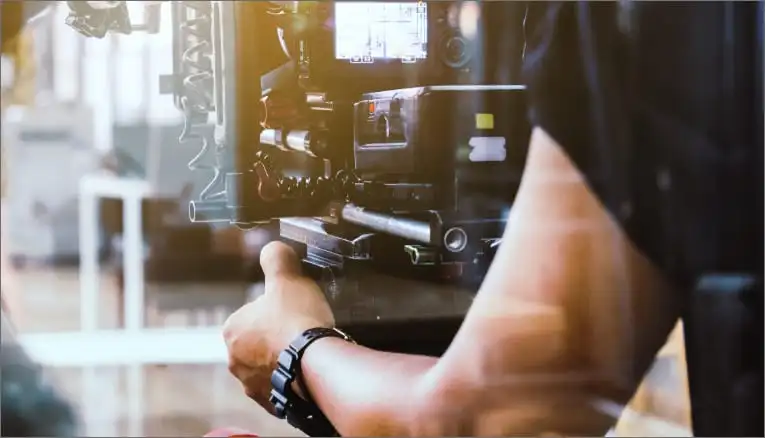Facial animation is a crucial aspect of bringing characters to life in the world of animation and visual effects. Mastering facial animation for expressive characters requires a combination of technical skill, creativity, and attention to detail.
In this blog post, we will explore various tips, techniques, and tools that can help you enhance your facial animation skills and create compelling and emotive characters.
1. Understand Facial Anatomy
Before diving into facial animation, it is essential to have a solid understanding of facial anatomy. Knowing the underlying structure of the face, including muscles, bones, and skin, will help you create more realistic and expressive animations.
Take the time to study facial anatomy through books, online resources, or even anatomy drawing classes to improve your knowledge in this area.
2. Study Facial Expressions
Observing real-life facial expressions is a great way to improve your animation skills. Pay attention to how people’s faces move and change during different emotions and situations.
Watch movies, TV shows, and videos of people talking to observe subtle facial movements and expressions. This observation will help you replicate natural-looking expressions in your animations.
3. Use Reference Materials
When working on facial animation, having reference materials can be incredibly beneficial. Use mirrors to study your own facial expressions and movements. You can also record yourself making different expressions and use these videos as a reference when animating characters.
Additionally, there are plenty of online resources and tools available that provide reference images and videos for facial expressions.
4. Focus on Timing and Spacing
Timing and spacing play a crucial role in creating believable facial animations. Pay attention to the timing of each movement and ensure that the transitions between expressions are smooth and natural.
Experiment with different timing and spacing techniques to convey the right emotions and expressions effectively.
5. Utilize Facial Rigging Tools
Facial rigging tools can streamline the animation process and make it easier to create complex facial expressions. These tools allow animators to manipulate various parts of the face, such as the eyes, eyebrows, and mouth, with precision. Familiarize yourself with popular facial rigging software and practice using them to enhance your animation skills.
6. Add Secondary Movements
Incorporating secondary movements can add depth and realism to your facial animations. Think about how other parts of the face, such as the ears, hair, or neck, would react to different expressions and movements. Adding subtle secondary movements can make your characters feel more alive and expressive.
7. Seek Feedback
Feedback is an invaluable tool for improving your facial animation skills. Share your work with peers, mentors, or online communities to receive constructive criticism and suggestions for improvement. Take feedback positively and use it to refine your animations and grow as an animator.
8. Practice Regularly
Like any skill, mastering facial animation requires practice and dedication. Set aside time each day to work on facial animations, experiment with different techniques, and challenge yourself to create diverse expressions. The more you practice, the more confident and skilled you will become in animating expressive characters.
9. Stay Updated on Industry Trends
The animation industry is constantly evolving, with new technologies and trends shaping the way characters are brought to life on screen. Stay updated on the latest industry trends, software updates, and techniques related to facial animation.
Attend workshops, conferences, and online courses to expand your knowledge and stay ahead in the competitive animation industry.
10. Explore Career Opportunities
Mastering facial animation for expressive characters can open up a world of career opportunities in the animation and visual effects industry. Some of the top job roles in this field include character animator, facial animator, rigging artist, technical director, and animation supervisor.
With the right skills and experience, you can pursue a rewarding career bringing characters to life on the big screen.
Conclusion
In the competitive world of animation, mastering facial animation for expressive characters is a valuable skill that can set you apart as a talented and versatile animator.
By following the tips and techniques outlined in this blog post, you can enhance your facial animation skills, create captivating characters, and pursue a successful career in the animation industry.
Key Takeaways:
- Understand facial anatomy to create realistic and expressive animations.
- Study real-life facial expressions for inspiration and accuracy.
- Use reference materials and tools to enhance your animation process.
- Focus on timing, spacing, and secondary movements for believable animations.
- Utilize facial rigging tools for precision and complexity in facial expressions.
- Incorporate feedback to improve and refine your facial animation skills.
- Regular practice is essential for mastering facial animation techniques.
- Stay updated on industry trends and advancements in facial animation technology.
- Explore diverse career opportunities in the animation and visual effects industry.
Consider taking Yellowbrick’s NYU Animation Industry Essentials online course to further enhance your skills and knowledge in facial animation.








